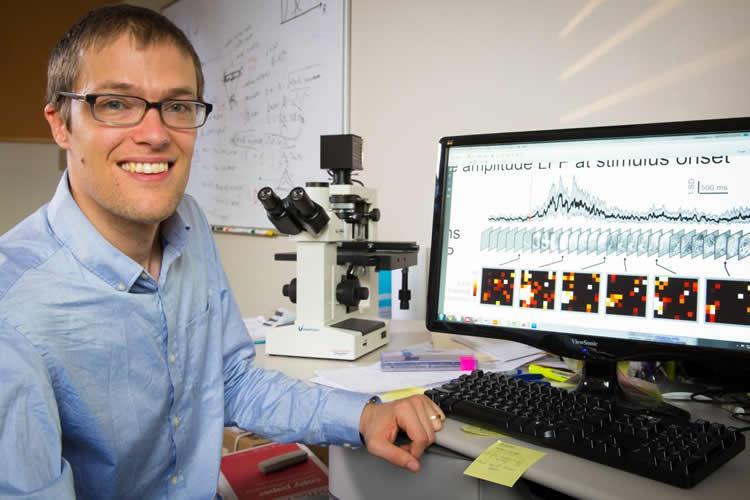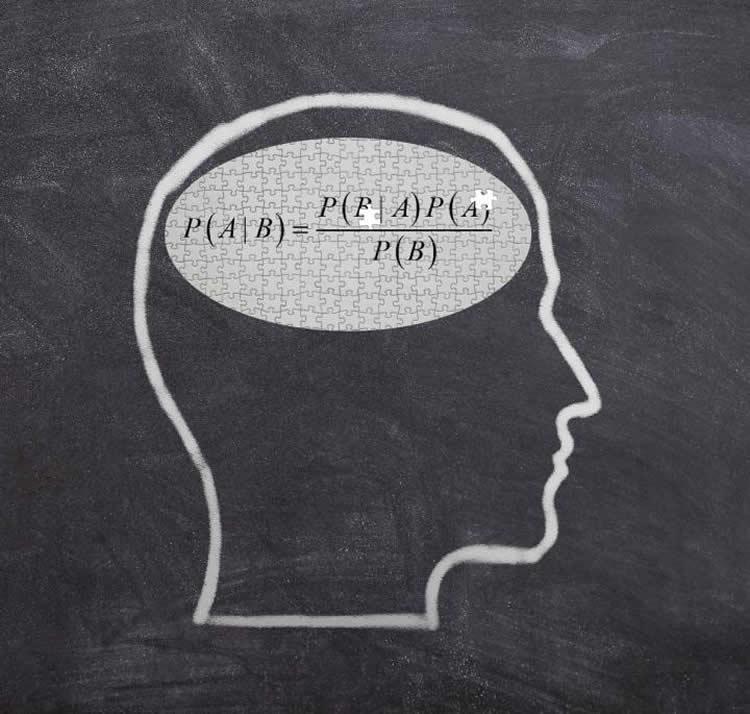Using a unique computational framework they developed, a team of scientist cyber-sleuths in the Vanderbilt University Department of Molecular Physiology and Biophysics and the Vanderbilt Genetics Institute (VGI) has identified 104 high-risk genes for schizophrenia. Their discovery, which was reported April 15 in the journal Nature Neuroscience, supports the view that schizophrenia is a developmental disease, one which potentially can be detected and treated even before the onset of symptoms. “This framework opens the door for several research directions,” said the paper’s senior author, Bingshan Li, PhD, associate professor of Molecular…
Read MoreCategory: Brain
Research provides important insight on the brain-body connection
A study conducted by University of Arkansas researchers reveals that neurons in the motor cortex of the brain exhibit an unexpected division of labor, a finding that could help scientists understand how the brain controls the body and provide insight on certain neurological disorders. The researchers studied the neurons in the motor cortex of rats and found that they fall into two groups: “externally focused” neurons that communicate with and control different parts of the body and “internally focused” neurons that only communicate with each other and don’t send signals…
Read MoreLight, physical activity reduces brain aging
Incremental physical activity, even at light intensity, is associated with larger brain volume and healthy brain aging. Considerable evidence suggests that engaging in regular physical activity may prevent cognitive decline and dementia. Active individuals have lower metabolic and vascular risk factors and these risk factors may explain their propensity for healthy brain aging. However, the specific activity levels optimal for dementia prevention have remained unclear. The new 2018 Physical Activity-Guidelines for Americans suggest that some physical activity is better than none, but achieving greater than 150 minutes of moderate-to-vigorous (MV)…
Read MoreBehavioral disorders in kids with autism linked to reduced brain connectivity
More than a quarter of children with autism spectrum disorder are also diagnosed with disruptive behavior disorders. For the first time, Yale researchers have identified a possible biological cause: a key mechanism that regulates emotion functions differently in the brains of the children who exhibit disruptive behavior. The study appears in Biological Psychiatry: Cognitive Neuroscience and Neuroimaging. “Disruptive behaviors such as aggression, irritability, and noncompliance are common in children with autism, and are among the main reasons for psychiatric treatment and even hospitalization,” said Denis Sukhodolsky, senior author and associate professor…
Read MoreThe brain’s imperfect execution of mathematically optimal perception
Human perception is based on mathematically optimal principles, but the brain implements those principles imperfectly, suggests new research by Elina Stengård and Ronald van den Berg of the University of Uppsala, Sweden. They present their findings in PLOS Computational Biology. The human brain uses imprecise sensory inputs to determine truths about the surrounding environment. Previous research has suggested that human perception is “Bayesian,” meaning that the brain accounts for uncertainty of sensory observations in a mathematically optimal way. However, some of those studies have been criticized mathematically, and other research suggests…
Read More



